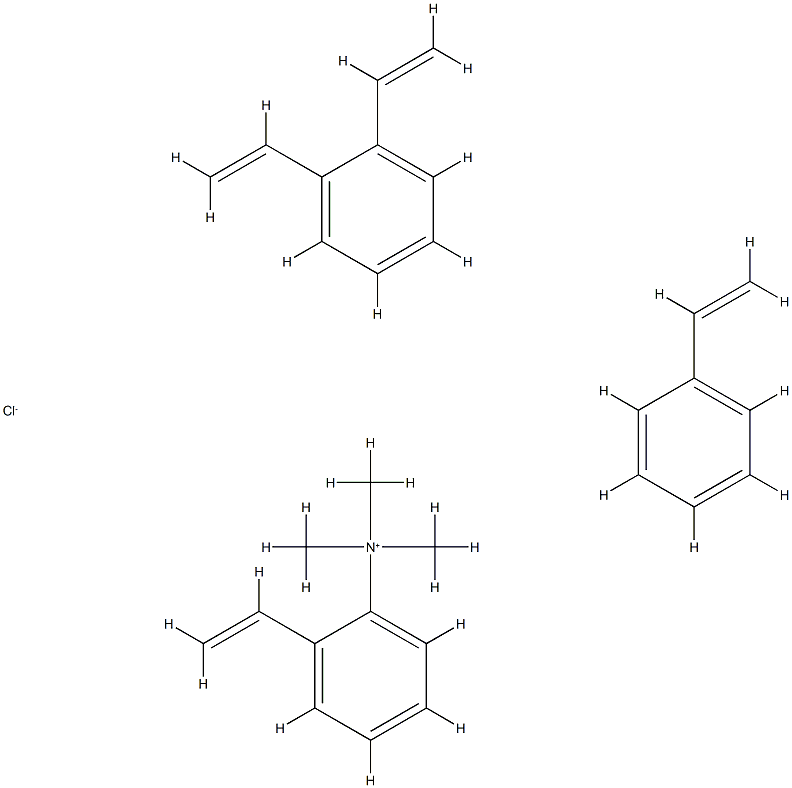RESIN
- Empirical Formula: C6H8N3O2R
- Molecular Weight: 154.15
- MDL number: MFCD00801342
- Update Date: 2023-11-28 16:31:44

What is RESIN?
Chemical properties
It has no definite melting point and no tendency to crystallize.
The Uses of RESIN
resin is used to give gloss, flow, adhesion, and water resistance to cosmetics. This is a brittle substance, usually translucent or transparent, that can be found in nature or synthetically manufactured. Among the natural resins are dammar, elemi, and sandarac, which are formed from the hardened secretions of these plants. Toxicity and allergenicity depend on the source used.
Definition
A semisolid or solid complex amorphous mix of organic compounds.
Definition
A yellowish insoluble organic compound exuded by trees as a viscous liquid that gradually hardens on exposure to air to form a brittle amorphous solid. Synthetic resins are artificial polymers used in making adhesives, insulators and paints. See also rosin.
Definition
resin: A synthetic or naturally occurringpolymer. Synthetic resins areused in making plastics. Naturalresins are acidic chemicals secretedby many trees (especially conifers)into ducts or canals. They are foundeither as brittle glassy substances ordissolved in essential oils. Their functionsare probably similar to those ofgums and mucilages.
Industrial uses
Originally a category of vegetable substancessoluble in ethanol but insoluble in water, resinin modern technology is generally an organicpolymer of indeterminate molecular weight.The class of flammable, amorphous secretionsof conifers or legumes are considered true resins,and include kauri, copal, dammar, mastic,guaiacum, jalap, colophony, shellac, andnumerous less well-known substances. Waterswellablesecretions of various plants, especiallythe Burseraceae, are called gum resinsand include myrrh and olibanum The officialresins are benzoin, guaiac, mastic, and resin.Other natural resins are copal, dammar,dragon’s blood, elaterium, lac, and sandarac.The natural vegetable resins are largely polyterpenesand their acid derivatives, which find application in the manufacture of lacquers,adhesives, varnishes, and inks.
Mechanism of action
Prior to the introduction of the statins in the mid to
late 1980s, the bile acid–sequestering drugs cholestyramine
(Questran) and colestipol (Colestid) were primary
drugs for lowering plasma cholesterol. Today they are
second-line drugs that can safely be given with a statin
to enhance cholesterol lowering or as an alternative for
patients intolerant to a statin or concerned with statin’s
potential for toxicity.Alone, the resins can achieve 20 to
25% reductions in LDL cholesterol, but when used with
a statin, such as lovastatin, reductions of 50% and more
can be seen.
These drugs are basically anion exchange resins that
remain in the gut, bind intestinal bile acids, and greatly
increase their fecal excretion.
The lowered concentration of bile acids returning to the
liver by the enterohepatic circulation results in derepression
of 7-α-hydroxylase, the rate-limiting enzyme
for conversion of cholesterol to bile acids.This results in
increased use of cholesterol to replace the excreted bile
acids and lowering of hepatic cholesterol. Thus, similar to the statins, the ultimate
actions of the bile acid–sequestering resins are upregulation
of transcription of the LDL receptor gene,
increased hepatic receptor activity, and lowering of
plasma LDL cholesterol.
Clinical Use
The bile acid sequestering resins lower elevated LDL cholesterol and therefore are useful in the treatment of type IIa hyperlipoproteinemia. However, because the resins can raise plasma VLDL in some patients, they are not recommended for treatment of combined hyperlipidemias when both LDL cholesterol and VLDL triglycerides are high or in other conditions of elevated triglycerides.
Side Effects
The resins are interesting drugs because they have profound metabolic effects without truly entering the body. Perhaps for this reason they are relatively safe, with constipation being the chief complaint. Because the resins are given as the chloride salt and the chloride is exchanged for the negatively charged bile salt, bile acid resins can lead to hyperchloremic acidosis in vulnerable patients (children and patients with kidney failure).
Properties of RESIN
| storage temp. | 2-8°C |
| form | saline suspension |
| Dielectric constant | 1.5(Ambient) |
Safety information for RESIN
Computed Descriptors for RESIN
New Products
4,4-Difluoropiperidine hydrochloride tert-butyl 9-methoxy-3-azaspiro[5.5]undecane-3-carboxylate Indole Methyl Resin N-Isopropylurea N,N-Dicyclohexylcarbodiimide(DCC) MELDRUMS ACID 5-METHYLISOXAZOLE-4-CARBOXYLIC ACID Magnessium Bis glycinate Zinc ascorbate 1-bromo-2-butyne 2-acetamidophenol 9(10H)-anthracenone Erythrosin B, 4-Piperidinopiperidine 2-((4-morpholinophenylamino) (methylthio) methylene) malononitrile 2,4-dihydroxybenzaldehyde 3-(4-morpholinophenylamino)-5-amino-1H-pyrazole-4-carbonitrile Methyl 2-methylquinoline-6-carboxylate 2,6-dichloro-4-nitropyridine 4-Bromo-2-chlorobenzonitrile 2-(benzylamino)acetic acid hydrochloride 4-(tert-Butoxycarbonylamino)but- 2-ynoic acid 3,4-dihydro-2H-benzo[b][1,4]dioxepine 1-Phenyl-1-cycloprppanecarboxylicacidRelated products of tetrahydrofuran
You may like
-
 74 Centimeter Resin 7 Chakra HangingView Details
74 Centimeter Resin 7 Chakra HangingView Details -
 Resin Durga Maa Statue No-5-5-1050, HomeView Details
Resin Durga Maa Statue No-5-5-1050, HomeView Details -
 Party Shoulder bag NM 1161 Resin Purse With Filigree Work Purse, Size: 12x12x6 cmView Details
Party Shoulder bag NM 1161 Resin Purse With Filigree Work Purse, Size: 12x12x6 cmView Details -
 Meditating Buddha Resin ShowpieceView Details
Meditating Buddha Resin ShowpieceView Details -
 white 1.5 KG Crystal Clear resin 2:1, Packaging Type: BottleView Details
white 1.5 KG Crystal Clear resin 2:1, Packaging Type: BottleView Details -
 20677-73-0 (2,2-diethoxyethyl)methylamine 98%View Details
20677-73-0 (2,2-diethoxyethyl)methylamine 98%View Details
20677-73-0 -
 3-(4-(hydroxyamino)-1-oxoisoindolin-2-yl)piperidine-2,6-dione 98%View Details
3-(4-(hydroxyamino)-1-oxoisoindolin-2-yl)piperidine-2,6-dione 98%View Details -
 57381-49-4 2-bromo-4-chlorobenzonitrile 98%View Details
57381-49-4 2-bromo-4-chlorobenzonitrile 98%View Details
57381-49-4




